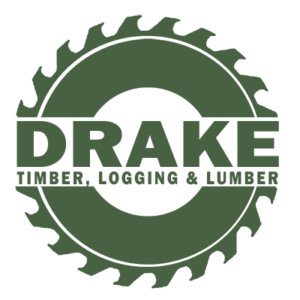HOW MUCH IS MY TIMBER WORTH?
 Many variables affect the price a timber buyer is willing to pay. Here are the top five in our industry.
Many variables affect the price a timber buyer is willing to pay. Here are the top five in our industry.
- PROXIMITY TO A SAW MILL: Your timber might command a higher price than if the timber were far from mills or close to only one or two mills. Transportation costs will drive the price paid, if you are not near competitive log buyers such as saw mills or pulp wood buyers.
- SPECIES, AGE, SIZES AND QUALITY OF TIMBER: Timber’s value is dependent on the species, sizes, and qualities of the trees growing in it. A large, top quality black cherry, for example, would command a significant price premium as a veneer log, while limby and crooked sweetgum might be priced as pulpwood for paper production.
- QUANTITY OF WOOD YOU HAVE TO SELL: How much timber is sold in one timber sale and what kind of harvesting is done will drastically change the prices offered. We require a minimum of 10 full acres of marketable timber. Beyond that, It is more costly per unit of wood removed to cut only a few or selected trees, rather than cut most or all trees on a property. The greater the harvest expense per tree, the less the harvester may be willing to pay for the trees.
- TERRAIN AND EASE OF LOGGING YOUR LAND: The final price a timber buyer will be willing to pay definitely depends on the working conditions of your land. For instance, distance from the timber the nearest main highway, slope of the land, soil compaction, stands of water or wetness, and whether temporary bridges need to be built across waterways or ditches. All of these situations drive the operational costs of logging and will effect what a buyer is willing to pay.
- LOCAL LAWS, REGUALATIONS AND PRACTICES: State and local logging laws and practices effect pricing and logging overhead. For instance the type of equipment that can be used, environmental laws that create buffer zones near adjoining properties, streams, ponds and other waterways, protection of animal species, and labor related taxes, insurance and costs.
- EDUCATIONAL or GOVERNMENT AGENCIES: Some state universities and government agencies offer low cost or free timber valuation and assessment services.
- REPUTABLE TIMBER BUYING AND LOGGING COMPANIES: A reputable timber buying, logging or forestry product company in your area who has the experience, resources, and industry leverage to get the most from your timber once it is harvested. Most of these companies can expertly assess and value your timber assets free of charge.
- HIRE A REPUTABLE TIMBER CONSULTANT. This can be very useful and helpful for long term sustainable forestry activities on your land, but expensive in the long run, due to their potential upfront or backend fees. This is really only an option for large land tract owners, who want to create long term planning and implementation of logging on their land.
HOW DO I SELL MY TIMBER?
Once you’ve generally assessed the value of your timber and want to sell your timber either to a logging, sawmill or forestry company there are few basic ways to go about selling your land. Each has its pros and cons.
- LUMP SUM PAYMENT
- Pro: Access the money in your forestry asset quickly and upfront
- Con: May not receive as much money in the long run, if you are able or willing to wait for payments on logging of your timber.
- DEPOSIT & PERCENTAGE SHARE
- PRO: Some money realized upfront from your timber assets, and based on the quality, amount and type of timber harvested you will receive the most money from your timber.
- CON: The process of preparing land, logging, merchandising of timber and full payments for the merchandised timber will absolutely require more patience, understanding of the market and time.
- BID PROPOSAL CREATION & SELL TO THE HIGHEST BIDDER FOR LUMP SUM.
- PRO: This potentially has the most chance of getting the most money from your timber assets, but this is not guaranteed.
- CON: This will require the help of an experienced Timber Consultant who can create proposals, contracts and oversee the bidding by many bidders, while weighing his knowledge of not only market prices, but also buyer reputations, logging company practices and reputation, and their personal opinions. This also will cost you a percentage of the final bid price, lowering your realized profits from the sale of your timber assets.
If you decide not to have a professional forester visit your land to evaluate your timber, then you should obtain as many offers as possible. Once you have decided on a buyer and method of purchase, please ensure that the company you work with is:
- Bonded and Insured
- Understands your property, its boundaries and any buffer zones..
- These companies are reputable and accredited by local associations
- Understand completely what your intentions for the land are including: the type and size of trees you want harvested, care of the environment, road usage and maintenance, areas to remained untouched, and future plans that may be affected by logging operations.
- Have signed a fully enforceable written timber sale or land sale contract with you; this is essential to all legitimate timber sales.


